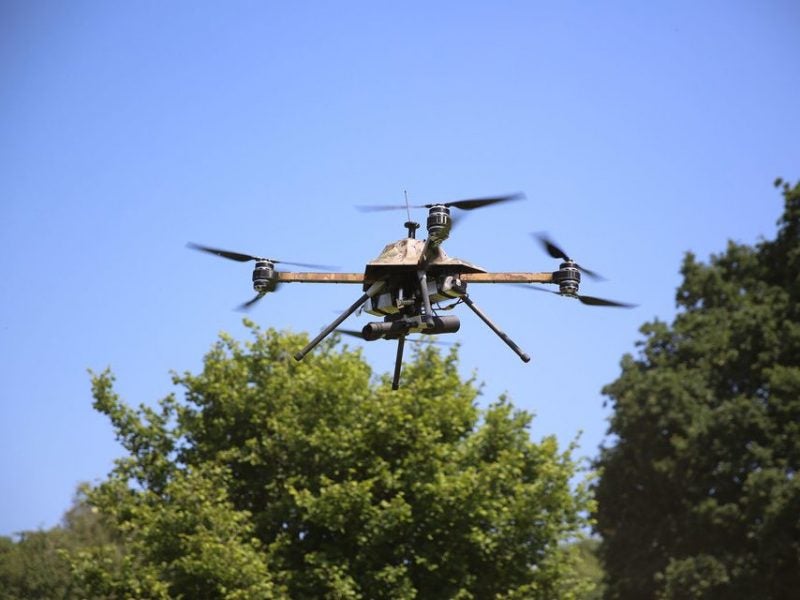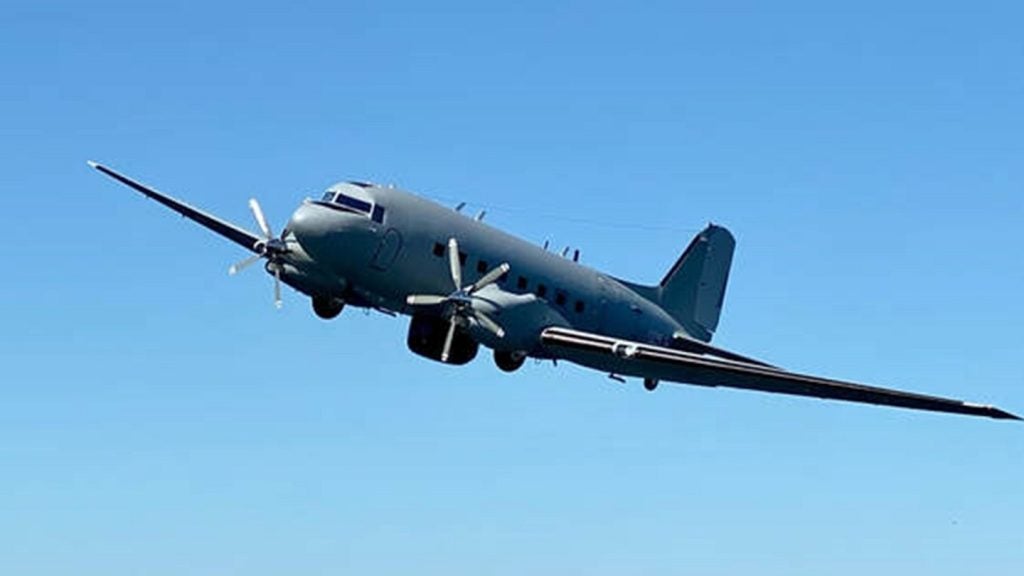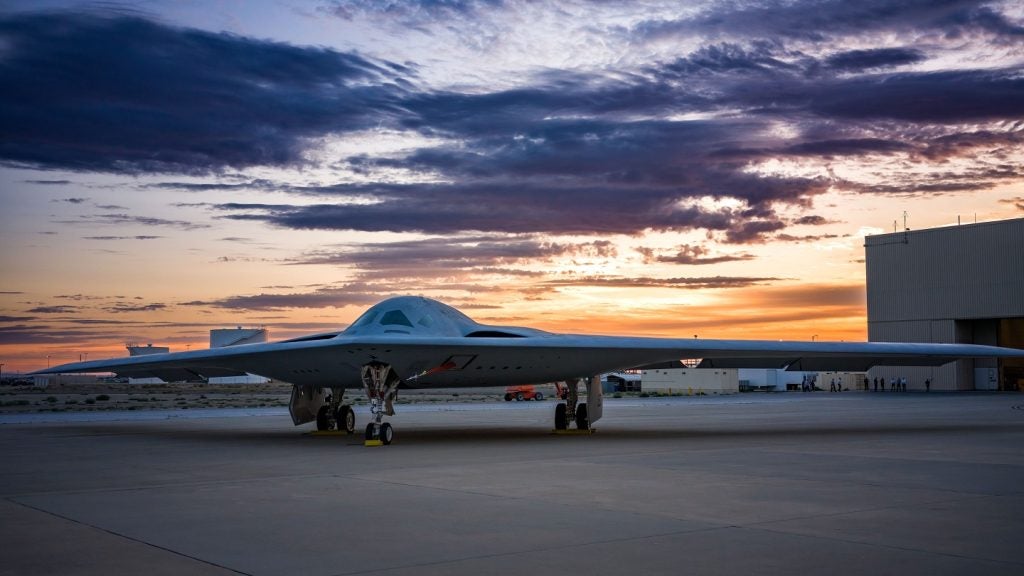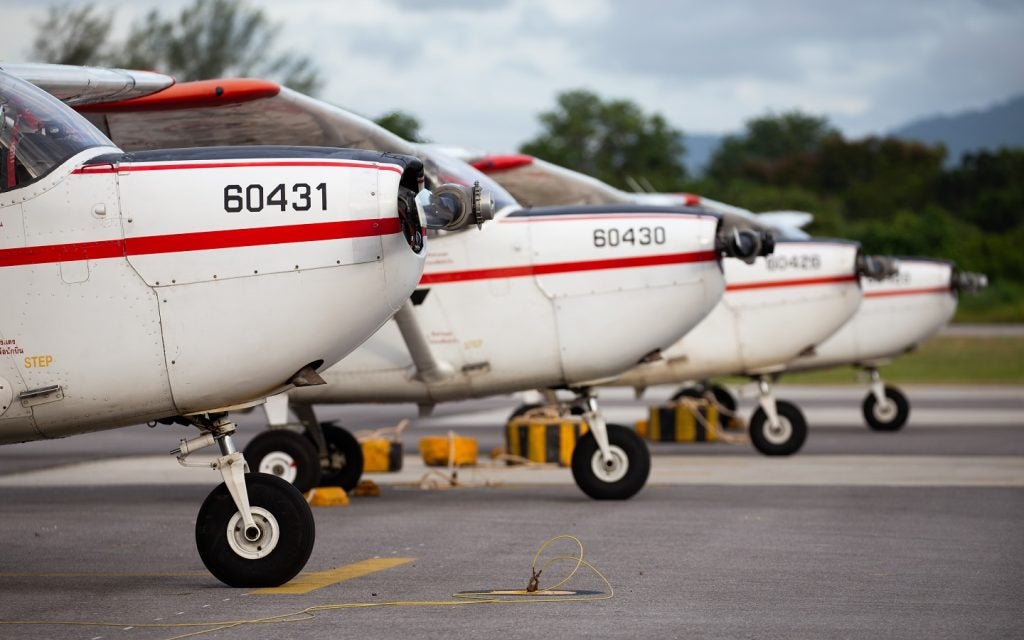
SteelRock Technologies and Chemring Technology Solutions have integrated Chemring’s RE70 M3 recoilless disruptor, which was originally designed to be deployed near the target by a bomb technician or mounted on a robot vehicle, with SteelRock’s W03 Protector UAV platform to create a revolutionary solution to neutralise improvised explosive devices (IEDs) in difficult-to-access environments. The companies have been trialling the hybrid platform for the past 18 months.
SteelRock’s director of operations and former bomb tech Liam FitzGerald-Finch explains the need for the solution and the challenges the programme is overcoming.
Grant Turnbull: How did you identify the need for a UAV-mounted IED disruptor?
Liam FitzGerald-Finch: SteelRock is a young start-up, probably less than three years old. Its primary product is counter-drone equipment in service in the UK with various departments and agencies. But the flipside of the company is we make bespoke heavy-lift drones.
Some members of the team at SR are former C-IED [counter IED] techs with extensive experience of using IED disruptors, and obviously understand the wider user group requirements in this arena.
The reason an EOD robot exists is twofold. One is it’s a platform to support the disruptor, and two it’s an explosive ordnance reconnaissance platform. UAVs add the ability to go up into the air effectively and move around in the third dimension; it’s a natural evolution as it gets around mobility issues and from my perspective I have to walk down the road less.
What alterations did you make to the drone?
The drone’s control systems respond very, very fast to changes in attitude, so it controls the pitch. When the disruptor fires, the operator barely notices; the drone basically irons out any of the recoil that is transmitted to it. All we did was play around with it and put some “special sauce” in there to make it very, very stable so it stays on heading post firing.
How well do you really know your competitors?
Access the most comprehensive Company Profiles on the market, powered by GlobalData. Save hours of research. Gain competitive edge.

Thank you!
Your download email will arrive shortly
Not ready to buy yet? Download a free sample
We are confident about the unique quality of our Company Profiles. However, we want you to make the most beneficial decision for your business, so we offer a free sample that you can download by submitting the below form
By GlobalDataWhat were the biggest challenges to overcome?
There were some engineering challenges with the Chemring disruptor, which uses a counter mass systems; it fires a projectile out of the sharp end and dumps a load of water out the back at the same time. The timing’s clever because the recoil is effectively sum zero.
But there’s a big mass shift which is the real trick from the drone’s perspective because it’s carrying a payload that’s balanced with nearly a kilo of water at one end of it and a projectile at the other. So there’s that very quick mass shift and essentially gravity changes, and that’s what the drone is reacting to, not necessarily the recoil.
Why did you select the RE70 M3 disruptor?
The RE70 M3 disruptor is a commercial off-the-shelf item for Chemring and it is excellent, there’s no other way to put it. They’ve done lots of really good homework making things very useable, robust – ‘soldier-proof’, dare I say it. It’s all about being intuitive and reducing training burden and something that actually works.
They’ve configured something that works across a number of different environments; hanging it from a drone is its natural evolution. It sights perfectly well, the disruptor doesn’t mind really what orientation it’s in.
Using items that are familiar to EOD operators already reduces training burden; EOD operators will have either used the RA-70 or a similar model from a different company. Sticking it on a drone means all the EOD operator team has to do is learn the drone, not another new disruptor. Targeting is via high-res camera, reticule and optional laser alignment aids.
Do you have a customer base in mind?
Military EOD/C-IED is definitely in our target audience but to be honest, I see this platform or a variation on it being well-suited to humanitarian situations. Think of it this way: it’s a C-IED tool but has high-res cameras on board and so it can do reconnaissance and decent imagery, with potential for real-time 3D orthomosaic mapping. All of which are of varying importance in post-conflict zones and disaster areas.
You can swap the payload out and configure it for first aid delivery and Red Cross-type applications. I’d like to sell a bunch of these things for the demining arena, so Colombia, Bolivia, places where there’s a couple of generations of clearance to be done.
What’s your biggest challenge in getting the prototype working?
Aiming and getting the thing to tilt. It’s easy to make the projectile fly away from the drone, you just point it in the right direction, but the countermass comes directly out of the back. Depending on where you put that on the drone, that’s firing straight through the props, which is sub-optimal.
Aiming is quite interesting because you think flippantly we’ll stick the drone on hover and have an actuator arm that will do the up and down, and then just pan the drone left and right. But then you start to look into the control system software. It’s got an accuracy of between one and three degrees which, as you can shoot things up to 30m away with some of the Chemring projectiles, is quite a margin of error. We’re slowly honing that down to nice high levels of accuracy. It’s all about safety assurance.
What certification are you carrying out?
We’re going through a very comprehensive process of certification at the moment. We’re not doing this to get a specific certificate at the end of it; what we’re doing is configuring so the drone is certifiable, not certified. So a British customer may want Military Aviation Authority, but an overseas customer could have a different requirement.
So we’re trying to configure it to be certifiable to the very highest standard that we can see at the moment. Then the final bit will be paid for by the customer when they say we’ll certify the drone to this standard and we will map our process across to meet their certification criteria.
This is almost certainly an industry first. There are many examples of fixed-wing drones that have been certified under different programmes and qualifications but we’re going through the process of producing a rotary-wing airframe that is certifiable under a military aviation authority scheme. This will add levels of assurance and safety that have not previously been available for a small UAV platform.






